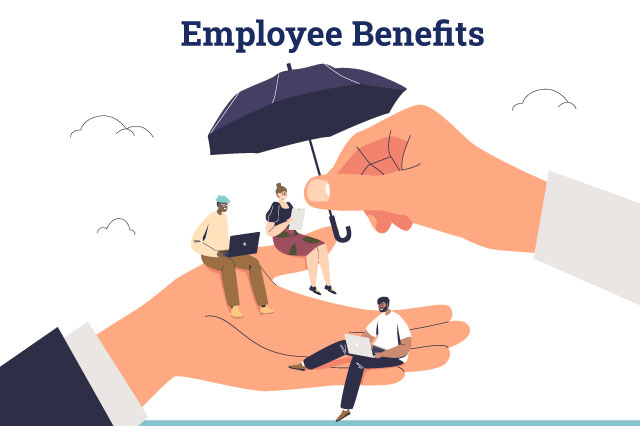Rather than wasting time and resources getting bogged down by employment regulations, complicated payroll and managing health insurance plans, outsourcing your HR functions to an ASO or PEO makes a lot of sense for growing businesses. However, which one is right for my company?






A big difference between a PEO and an ASO is the structure and terminology called Co-Employment. Often, a business owner will dismiss the value of a PEO because they are afraid of losing control of their employees. Their perception is that the employee will no longer work for their company but that the PEO will become the employer of record. To be clear, the client is able to maintain control and direction over the employees within the PEO relationship. The PEO is often viewed as a co-employer, this is beneficial when it comes to negotiating health insurance and other compensatory elements, because a PEO is seen to have tens of thousands of employees, meaning they have much greater purchasing and negotiating power than you would as a small business owner. Recently, Carrie Cherveny, Esq, who is a fabulous resource posted an excellent blog. https://www.hubinternational.com/blog/2019/05/preferred-employer-organization/ that gives additional insight into the items that are most important when considering a PEO.
In an ASO, your employees remain yours. The only relationship an ASO has with the employee is like that of any HR department: the ASO’s purpose is to administer employee relations compliance, but it also means you don’t have to hire another full-time employee to handle those tasks. An ASO can help with the development of employee handbooks, policies and procedures, but ultimately the enforcement will fall to you. The ASO only assists in an advisory capacity.
An ASO can help you find the right kind of insurance for your organization and even help you negotiate your rates and coverage. They can also help you administer the program for your employees. The only limits to your health and dental benefits are what you can afford as pricing will be based on your group’s data. It is much easier to have an ASO help find the right kind of coverage than it is trying to navigate the marketplace on your own.
Because the PEOs have tens of thousands of employees on the books, they can offer extremely affordable health and dental insurance plans. They can also offer other types of employee benefits such as 401(k), Life, Disability and other Voluntary benefits that you would find in much larger organizations. The PEO handles all negotiations and administration. Some organizations leverage the insurance benefits offered by their PEO as a recruiting tool.
With an ASO, the coverage is the responsibility of the employer. An ASO can help a business find the right kind of coverage and negotiate a policy. It can also manage the administration of that policy and handle any claims on behalf of the business. An ASO can also work with a client company to suggest ways to mitigate risk, should the business’s employees be prone to physical injury, like in a warehouse or construction business.
PEOs take on all the responsibility that comes with offering workers’ compensation insurance. They can do this because their risk is spread over a much larger pool of employees, so small- to mid-sized businesses may end up paying rates that are usually reserved for larger employers.
The PEO can act as a shield for its partner depending on the contract. In some cases, the PEO takes on the bulk of responsibility and liability for insurance claims, safety and loss. The business is paying for this coverage through its contract with the PEO. But, just like with workers’ compensation, the PEO will help its client look for areas where it can mitigate risk.
An ASO can once again help its client find the right kind of coverage; but, since there is no large pool to help spread the risk, all the responsibility and liability for any insurance claims, safety and loss rest solely with the company. Should there be a claim, the ASO can help from an administrative standpoint, but that’s it.
The PEO fees are typically higher; however, the net difference in cost may be less than an ASO as well as compared to a company’s current cost. A full, in depth process and cost analysis conducted by a subject matter expert (SME) is strongly recommended as it can be challenging to fully understand a PEO’s proposal as compared to a company’s current costs. There is an incredibly wide range of prices that vary from a percentage of payroll to a cost per employee per month. A full-service PEO will cost upwards of $150 per employee per month, but it will come with an amazing level of service, resources, online options for employees to sign up for benefits, training, videos and assessments. As with most things, you get what you pay for.
ASOs typically charge a flat rate and it’s usually lower per employee per month. Each service you need can be purchased a la carte, whether you need help with compliance issues, taxes or workers’ compensation insurance. You pay only for what you need. It’s important to clearly identify what the needs of the organization are and determine whether you will commit to using the services and resources being provided. Too many times, we have seen business owners make the decision to move forward with a PEO only to get to the end of the year and realize that the only services utilized were payroll, work comp and benefits. This is not typically an efficient use of resources. If you’re ok with the Co Employment relationship and having someone else carry the risk, then you will likely want to look at a PEO. If you just need a bit of help an ASO may be your preference. If we can address any questions or if you would like to do a deeper dive into these HR Outsourcing solutions please reach out to Chuck Cooper at 704.236.3131 or via email at chuck@whitewaterconsulting.net
Copyright Ⓒ 2025 White Water Consulting | Website by Zilman